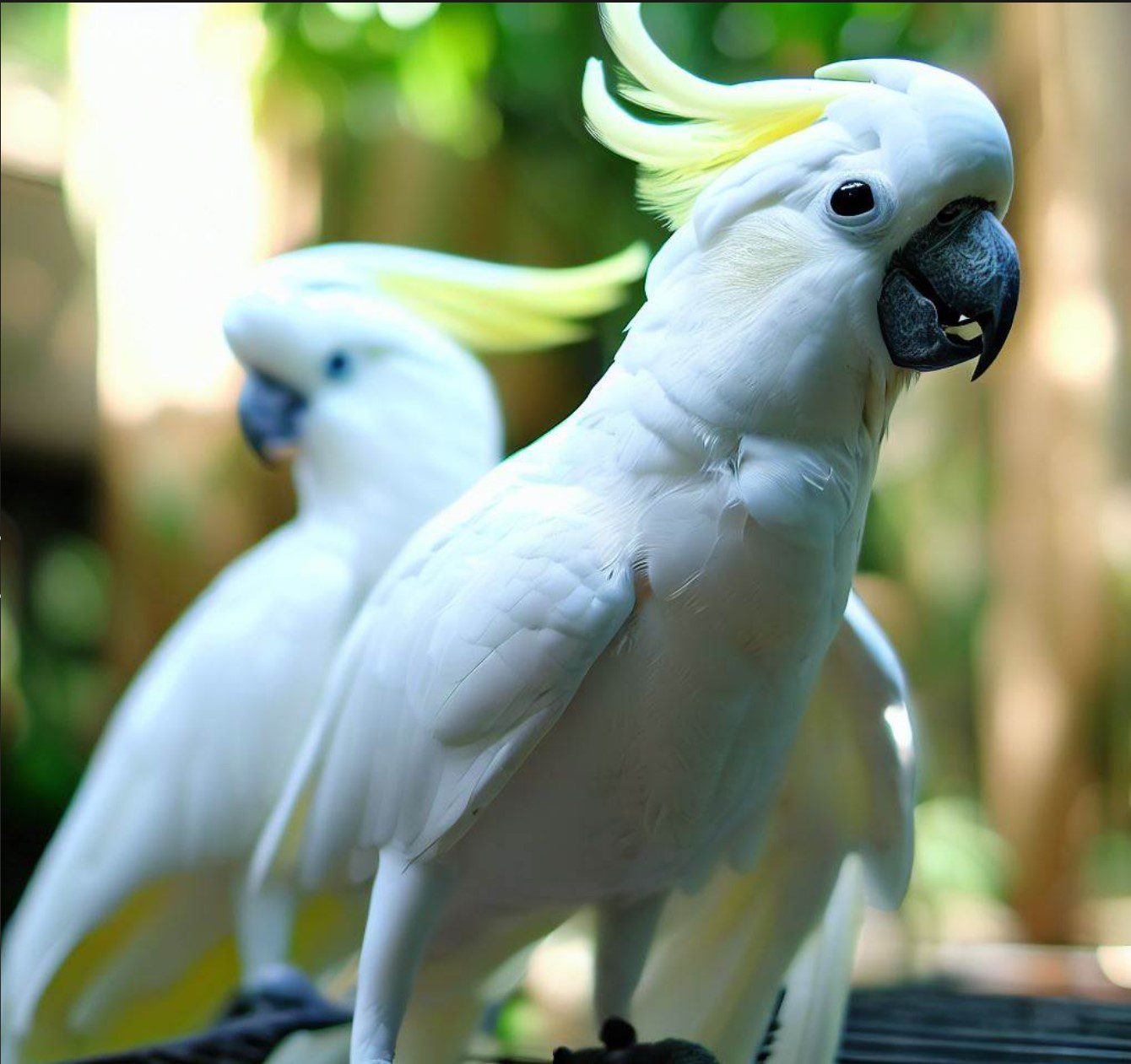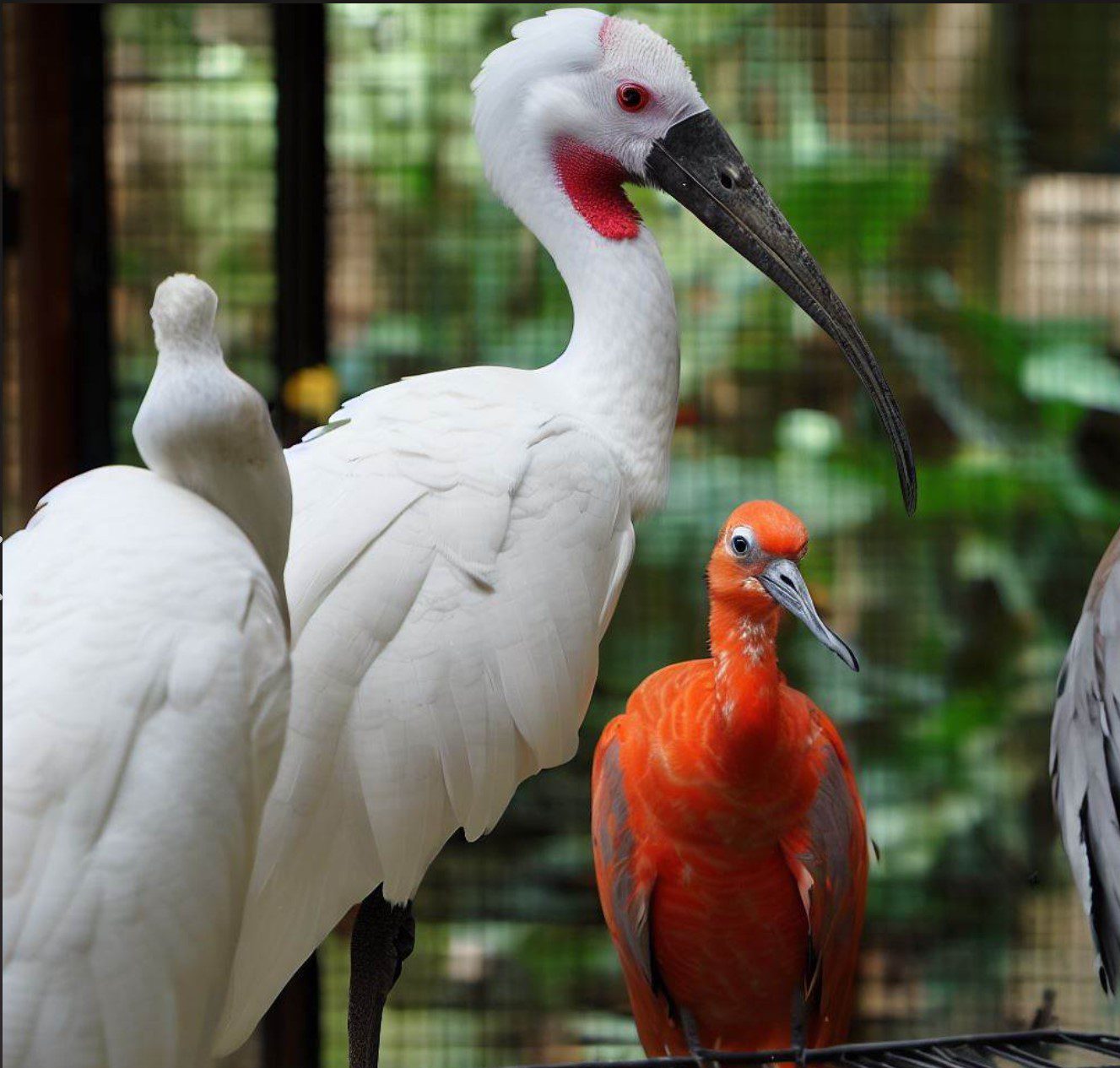Table of Contents
What is a Velcro Bird?
Oh, let me tell you about these amazing creatures called Velcro Birds! They are a unique species of birds that have adapted some incredible characteristics that make them stand out from the rest. These birds are known for their ability to stick to surfaces, just like the famous Velcro fastener, and their need for constant attention from their owners. It’s like having a bird that can cling to anything!

velcro-birds-standing-on-a-cage-2
Characteristics of Velcro Birds
Now, let’s dive into the fascinating characteristics of Velcro Birds:
- Adhesive Feet: They have specially designed feet with tiny hooks that allow them to stick to various surfaces. This adaptation helps them stay in place even in strong winds or while perching on vertical or upside-down surfaces.
- Excellent Climbers: Thanks to their adhesive feet, Velcro Birds are exceptional climbers. They can effortlessly navigate trees, walls, and even ceilings without any difficulty.
- Stealthy Hunters: These birds are also skilled hunters. Their ability to stick to surfaces enables them to approach their prey silently and swiftly, making them highly effective predators.
- Unique Plumage: They have distinct plumage that helps them blend seamlessly with their surroundings. This camouflage allows them to remain hidden from predators and increases their chances of successful hunting.
- Fascinating Adaptation: The adhesive properties of Velcro Birds’ feet are a remarkable example of nature’s adaptation at its finest. It’s incredible how they have evolved to utilize this feature for survival and thrive in their environment.
Types of Velcro Birds
Common Species Known to Be Velcro Birds

velcro-birds-standing-on-a-cage
These remarkable creatures possess the impressive ability to stick securely to surfaces like Velcro. A number of common species possess this amazing trait.
Sandhill Cranes are iconic Velcro birds. Found across North America from wetlands to grasslands, their long legs and distinctive red crown make them difficult to miss; what sets them apart though, is their strong feet which allow them to attach themselves firmly onto branches or power lines with ease.
Northern Flicker woodpeckers can often be seen perching precariously atop tree trunks in forests and open woodlands across North America, as they feature an adaption that allows them to attach themselves effortlessly to tree trunks and vertical surfaces.
Cockatoos, commonly referred to as velcro birds, are highly social creatures that tend to form strong relationships with those they meet and care about in their environment. A cockatoo is an affectionate but demanding pet.
Specific Traits and Behaviors of Velcro Birds
One key feature is their specialized feet. These feet have adapted structures such as strong claws or stiff tail feathers that provide extra grip.
Additionally, they also have powerful muscles in their legs that allow them to exert pressure and maintain a firm hold on surfaces. This enables them to perch securely, even in challenging environments.
Tips for Dealing with Velcro Birds
Understanding their Needs and Preferences
These feathered creatures are known for being affectionate companions, yet at times their constant need for attention may become a bit much to handle. Here are a few tips to help understand their needs and preferences:
- Provide Enrichment: Velcro birds thrive on mental stimulation. Make sure to provide them with plenty of toys, puzzles, and activities to keep their minds engaged.
- Set a Routine: Establish a consistent daily routine for your bird. This will help them feel secure and know what to expect throughout the day.
Establishing Boundaries and Independence
Now, let’s talk about setting boundaries with these clingy birds. While it’s important to give them attention and affection, it’s equally important to establish boundaries and encourage independence:
- Create Safe Spaces: Set up designated areas where your bird can retreat to when they need some alone time. This could be a separate cage or a quiet corner in the room.
- Encourage Independent Play: Provide toys and activities that your bird can engage with on their own. This will help them develop independent play skills and reduce their dependency on constant human interaction.
Remember, dealing with velcro birds requires patience and understanding. By understanding their needs, setting boundaries, and encouraging independence, you can create a harmonious relationship with your feathered friend.
Training Techniques for Velcro Birds
Teaching Self-Play and Solo Activities
These little feathered friends can be so adorable and loving, but sometimes they can become a bit too clingy. Luckily, there are some training techniques that can help encourage self-play and solo activities for your velcro bird.
- Provide Enrichment: Set up a variety of toys and activities in your bird’s cage to keep them entertained. Rotate the toys regularly to keep things interesting.
- Promote Foraging: Hide treats or food in different areas of the cage or use foraging toys to encourage your bird to explore and keep themselves occupied.
Encouraging Independence and Decreasing Clinginess
Here are a few techniques to help encourage independence and decrease clinginess in your feathered friend.
- Schedule Alone Time: Gradually increase the amount of time your bird spends alone in their cage. Start with short periods and gradually extend the duration as they become more comfortable.
- Positive Reinforcement: Reward your bird with treats or praise when they engage in independent activities or play on their own. This will help reinforce their independence and encourage them to continue exploring on their own.
Remember, training takes time and patience. Be consistent with your efforts, and soon enough, you’ll have a happy and independent velcro bird!
Creating Enrichment for Velcro Birds
As a proud owner of a velcro bird, I can tell you that these feathered friends are incredibly intelligent and social creatures. They require mental stimulation and environmental enrichment to thrive and lead happy lives. If you want to provide the best care for your velcro bird, here are some tips on how to keep them engaged and entertained.
Toys and Activities to Keep them Engaged
- Puzzle Toys: Velcro birds love solving puzzles. Invest in interactive toys that require them to figure out how to access treats or rewards.
- Foraging Toys: Hide treats or food in foraging toys to encourage natural foraging behavior. This keeps them mentally stimulated and engaged.
- Rotate Toys: Introduce new toys regularly to prevent boredom. They are curious creatures and love exploring new things.
Environmental Enrichment Ideas
- Natural Perches: Provide a variety of perches made from different materials such as wood, rope, or branches. This helps mimic their natural environment and provides different textures for their feet.
- Social Interaction: Velcro birds are highly social animals, so make sure to spend quality time with them every day. Talk, sing, or even teach them tricks to keep their minds active.
- Outdoor Time: If weather permits, take your bird outside in a secure cage or harness. The sights, sounds, and fresh air will provide additional stimulation.
Remember, each velcro bird is unique, so observe their preferences and adjust the enrichment activities accordingly. With the right toys and environmental enrichment, your velcro bird will lead a fulfilling and happy life!
Building Trust and Bonding with Velcro Birds
Positive Reinforcement Training Methods
When it comes to building a strong bond with your velcro bird, positive reinforcement training methods are key. These birds are highly intelligent and social creatures, and they thrive on interaction and positive experiences. By using rewards such as treats, praise, and playtime, you can reinforce good behavior and create a positive association with you as their caregiver.
Importance of Quality Time and Interaction
Spending quality time is vital to building trust and deepening the bonds between you and your bird. Birds thrive on human interaction and crave attention, so make sure to set aside dedicated time each day for one-on-one activities such as talking with them or teaching new tricks – or just sitting nearby while they explore their environment!
At this quality time, it’s essential to be patient and understanding. Velcro birds may require extra time to warm up to new people or situations; by providing a soothing atmosphere they can feel more safe and secure.
Building trust and creating lasting connections between you and your velcro bird takes dedication, time, patience and love. Through appropriate training methods and quality time together you can establish an intimate bond.
Addressing Velcro Behavior Issues
Let’s talk about some common behavior issues that our beloved velcro birds may exhibit. Don’t worry, I’ve got some tips to help you overcome these challenges and create a harmonious environment for both you and your feathery companion.
Overcoming Separation Anxiety
When it comes to separation anxiety, velcro birds can become quite clingy. They may squawk, scream, or even pluck their feathers when left alone. To address this issue, start by gradually increasing the time you spend away from your bird. Provide plenty of mental and physical stimulation before leaving, such as interactive toys or puzzles. Additionally, consider using a white noise machine or leaving the radio on to provide some background noise that can help your bird feel less alone.
Dealing with Excessive Screaming or Attention-Seeking Behaviors
If your velcro bird tends to be a bit of a drama queen and demands constant attention through excessive screaming or attention-seeking behaviors, there are ways to manage this. First, ensure that your bird’s basic needs are met, including a balanced diet and plenty of exercise. Establish a consistent routine with designated playtime and training sessions to keep your feathered friend engaged. Consider using positive reinforcement techniques to redirect their behavior towards more desirable actions.
Remember, patience is key when addressing these behavior issues. With time, consistency, and a lot of love, you can help your velcro bird become a well-adjusted and happy member of your family.
Personal Experiences with Velcro Birds
Stories and Anecdotes from Bird Owners
Let me share with you my personal experience with my Cockatoos – these captivating creatures known as Velcro Birds! After several years as a bird owner, I can confidently say that Velcro Birds are unrivaled!
They are remarkable pets for many reasons, not least their incredible bond with their owners. These affectionate little birds make great companions – I remember one time sitting on the couch when Sunny, my Velcro Bird, hopped onto my shoulder and nuzzled up close against my cheek – it was such a heartwarming moment!
Intelligence is another distinguishing feature. They learn quickly, making training them simple. I taught Sunny how to wave hello when guests visit and it never fails to impress guests when guests stop over!
Velcro Birds are known for their playful personalities and affinity for interactive toys and games, which makes it such a pleasure to watch them explore new environments while engaging in playful antics. When I introduced one such puzzle toy to Sunny my Cockatoos Velcro Bird, he spent hours trying to unlock its hidden treat inside; both entertaining and stimulating my feathered friend.
Experienced Velcro Bird owners know it can be an extremely fulfilling journey! Their affectionate personalities, intelligence and playful traits make them wonderful companions – I highly suggest considering one as they will bring untold happiness and love into your life!